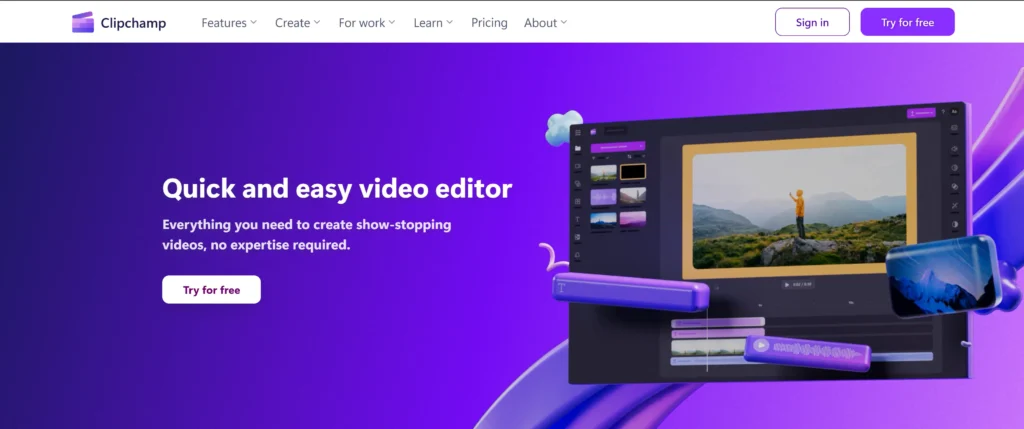While creating eye catchy content, choosing the right tool makes all the difference. Canva and Clipchamp are two popular platforms that offer powerful features for content creation. Each platform offer many features to content creators, marketers, and small business.
While their interface might seem same, they have different purposes. Canva offers templates for social media design, presentations and more. On the other hand, Clipchamp gives user an easy-to-use interface for video editing, complete with built-in stock footage and effects.
If you’re exploring design tools, don’t miss our roundup of the best Canva alternatives for different creative needs.
In this article, we’ll explore a detailed Canva vs Clipchamp comparison to help you choose the best fit.
Canva vs Clipchamp: What does Canva offers?

Canva is a popular tool for non-designers to design professional graphics with a simple drag-and-drop editor. Whether working on social media graphics, presentations, flyers, resumes or videos, Canva gives thousand of pre-built templates to get started.
Canva vs Clipchamp: What does Clipchamp offers?

Clipchamp is a powerful platform offering video editing interface designed for beginners and casual creators. Unlike other platforms, Clipchamp focuses on speed, simplicity and ease of use. It offers all the essential tools to make a professional video.
Canva vs Clipchamp: Comparison Table
| Feature | Canva | Clipchamp |
| User Experience | Simple drag-and-drop tool | Editor just focused on video editing |
| Templates | Thousands of ready-made templates | Only Video based templates |
| Editing Capabilities | Offers customization with graphics, animations, text effects and more | Professional video editing timeline with all necessary options like cuts, transitions, overlays and audio control |
| PDF & Document Features | Available | Not available |
| Video Tools | Video editor tool for simple projects | Video editor tool for advanced projects like trimming, multi-layer tracks, and webcam/screen recording |
| Brand Management | Brand Kit (colors, fonts, logos) | Not available |
| Team Collaboration | Available | Limited features available |
| Mobile Access | Full featured version available | Limited featured version available |
| Export Formats | JPG, PNG, PDF, MP4, GIF, SVG and transparent backgrounds | MP4 format with multiple resolution options |
| Third-Party Integrations | Google Drive, Dropbox, Meta platforms | Limited integrations |
| Free Version | Free plan with many templates and media assets | Free plan with watermark-free exports and basic video tools |
| Paid Plans | Starts at $12.99/month or $119.99/year; includes premium content and advanced tools | Premium plans start around $11/month (with Microsoft 365 perks for some users) |
| Support Options | Knowledge base, email, live chat (Pro), community forums, tutorials | Offers documentation and support; less extensive than Canva’s ecosystem |
Canva: Pros & Cons
Pros
- Simple Interface
- Massive Template Library
- Thousand of free assets
- Brand Kit & Collaboration
Cons
- Video Editing is Limited
- Internet Dependent
- Some Key Features are Paid
Clipchamp: Pros & Cons
Pros
- Built for Video Editing
- No Watermark on Free Plan
- Direct Screen & Webcam Recording
Cons
- Limited to Video
- Fewer Templates than Canva
- Desktop-Centric Experience
Final Thoughts & Recommendation

Choosing between Canva and Clipchamp actually depends on different creative needs. The right choice depends on what kind of content you’re producing.
If you want to get a solution for all your graphic needs, Canva is the best choice. But if you want just to focus on video editing, Clipchamp will best suit you.
Recommendation
Choose Canva if you need a wide range of design options.
Choose Clipchamp if you just want professional video editing experience.
FAQs – Canva vs Clipchamp
Canva is a platform that offers all type of graphic content creation including images, presentations, and simple videos. While Clipchamp just offers video related content creation.
When it comes to video editing, the competition of Canva vs Clipchamp comparison is clearly won by Clipchamp as it provides professional video editing tools.
No. Although Canva has a video editor but it only allows basic editing. Clipchamp, however, offers professional video editing features.



